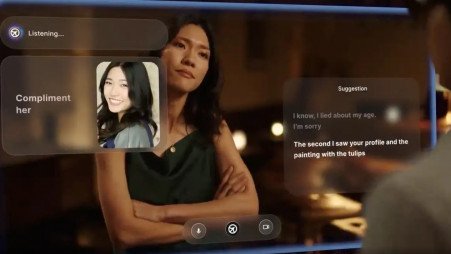In today’s fast-paced digital world, the term “attention” is tossed around in marketing rooms and tech conferences like a buzzword. But few truly understand its depth. Traditional ad tech sees attention as a metric — a means to track views, impressions, and clicks. AI startup Cluely, on the other hand, treats attention not just as a measurable asset but as a human experience. This subtle yet profound difference is why Cluely is standing out while the traditional advertising ecosystem struggles to evolve.
The Ad Tech Obsession With Metrics
For decades, the ad tech industry has relied on quantifiable markers: impressions, click-through rates (CTR), bounce rates, and dwell time. These metrics are optimized using complex algorithms and real-time bidding systems that compete for a millisecond of user gaze. On paper, this system appears robust and efficient. It provides data-driven insights, scalability, and automation.
But there’s a growing problem: these metrics don’t actually represent human attention. They only approximate it.
A user might see an ad for 5 seconds while scrolling but retain none of the information. A video might autoplay in the background, counting as a “view” despite being ignored. What the ad tech industry calls “attention” is often just screen exposure — not engagement, not interest, and certainly not impact.
This shallow understanding has led to diminishing returns. Consumers have developed “banner blindness.” Ad blockers have become mainstream. Even platforms designed to keep users glued to their screens — like social media — are witnessing declining attention spans. The signal is clear: if attention is currency, it’s being inflated.
Cluely’s Paradigm Shift
Enter Cluely, a new AI startup that’s reframing how attention is perceived and utilized. Rather than treating attention as a static measurement, Cluely regards it as a dynamic human process influenced by context, emotion, cognition, and timing. Their mission? To move from “attention hacking” to “attention honoring.”
At the heart of Cluely’s innovation is its AI engine that doesn’t just track where your eyes go — it seeks to understand why. It combines behavioral psychology, neuroscience, and ethical machine learning to build user models that predict not only what might catch someone’s eye but what will matter to them.
This deeper understanding enables Cluely to personalize content delivery in a way that feels intuitive and respectful, rather than invasive or manipulative. It’s not about bombarding users with more content. It’s about offering the right message at the right moment — and sometimes, knowing when not to say anything at all.
The Science of Meaningful Attention
Cluely’s philosophy aligns closely with what cognitive scientists have long known: attention is a limited resource. Human brains evolved to focus on only a few things at once — the most relevant, emotionally salient, or surprising stimuli. In contrast to brute-force tactics used by traditional ad platforms, Cluely’s AI tries to work with these natural tendencies rather than against them.
For example, Cluely doesn’t just use eye-tracking data to determine if a user looked at something. It looks at patterns over time, learning when users are receptive, when they’re distracted, and what kinds of content lead to genuine engagement. The result is a system that can predict not just attention but anticipation — the subtle cognitive preparation we make when we’re about to engage deeply with something.
This predictive capability is what makes Cluely’s approach revolutionary. Instead of trying to hijack attention, it aims to cultivate it — sustainably and respectfully.
Ethical Design in a Time of Overstimulation
Cluely also brings a critical ethical lens to the table. Unlike many ad tech platforms that optimize for maximum screen time or dopamine loops, Cluely takes a stand against manipulative design. Its algorithms are trained not only for efficiency but for well-being.
That means it doesn’t prioritize clickbait. It doesn’t rely on fear or outrage to keep people engaged. Instead, Cluely’s AI attempts to foster trust by delivering content that users have a high likelihood of valuing. If there’s no such content available? The algorithm is designed to pause.
This notion — that sometimes the best interaction is no interaction at all — is deeply countercultural in ad tech. And yet, it’s what sets Cluely apart. In a time when burnout, information overload, and digital fatigue are on the rise, Cluely understands that preserving attention is as important as capturing it.
Real-World Applications
Cluely’s technology isn’t theoretical. It has already started to reshape user experiences in areas like education, healthcare, and productivity tools. For instance, in e-learning platforms, Cluely’s system can detect when a student’s attention is waning and adjust the pacing or presentation style accordingly. In mental health apps, it avoids interrupting users during vulnerable moments, instead waiting for more emotionally stable windows to deliver messages or suggestions.
In contrast, traditional ad networks continue to push notifications, pop-ups, and autoplay ads with little regard for user context. The result? Frustration, disengagement, and a growing distrust of digital content providers.
Why the Ad Tech Industry is Struggling to Adapt
The reason ad tech hasn’t followed Cluely’s path is simple: incentives. The existing advertising ecosystem rewards short-term engagement over long-term value. It is built on quantity, not quality. Advertisers pay for impressions and clicks — not for how a message made someone feel or whether it improved their life.
This misalignment of incentives keeps the industry locked into practices that are increasingly outdated. Changing course would require a fundamental reevaluation of success metrics, revenue models, and user relationships. For large incumbents, that’s a daunting task.
Cluely, as a startup, has the agility to challenge these norms. It’s not beholden to legacy systems or massive contracts. It can innovate freely — and it does.
A Future Built on Attention Respect
The implications of Cluely’s approach extend far beyond advertising. In an era defined by distraction, any technology that can help people regain agency over their attention is not just valuable — it’s vital. Whether it’s reading news, watching a documentary, or learning a new skill, our ability to focus is what connects us to meaning.
Cluely seems to understand this intuitively. Its systems are not designed to capture attention at all costs but to elevate attention at the right cost. That may mean fewer notifications, more meaningful interactions, and, paradoxically, less screen time overall. And that’s okay — because what matters isn’t how long we look at a screen, but what we take away from it.
Conclusion
What Cluely gets — and what traditional ad tech forgets — is that attention isn’t just a metric. It’s a deeply human phenomenon that deserves respect, not exploitation. As more people seek authenticity in their digital experiences, the winners of tomorrow will be those who treat attention as sacred, not as a commodity.



